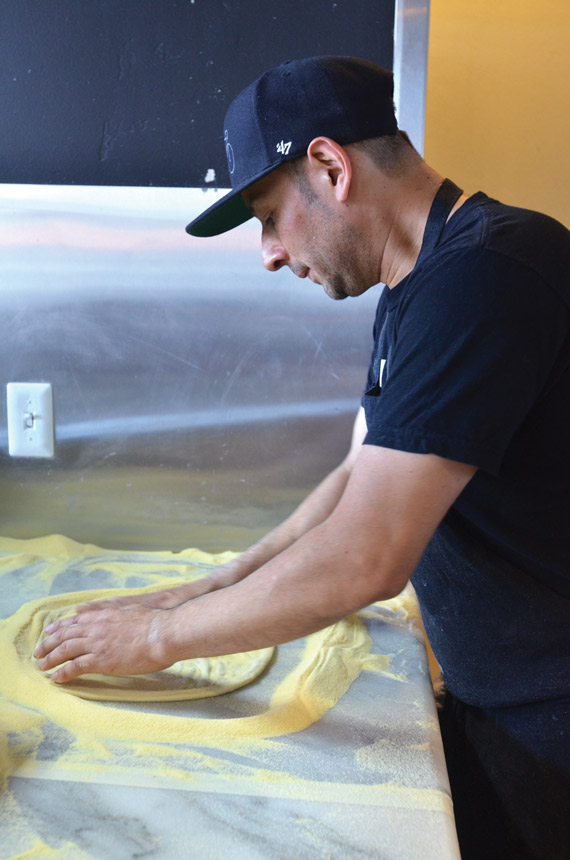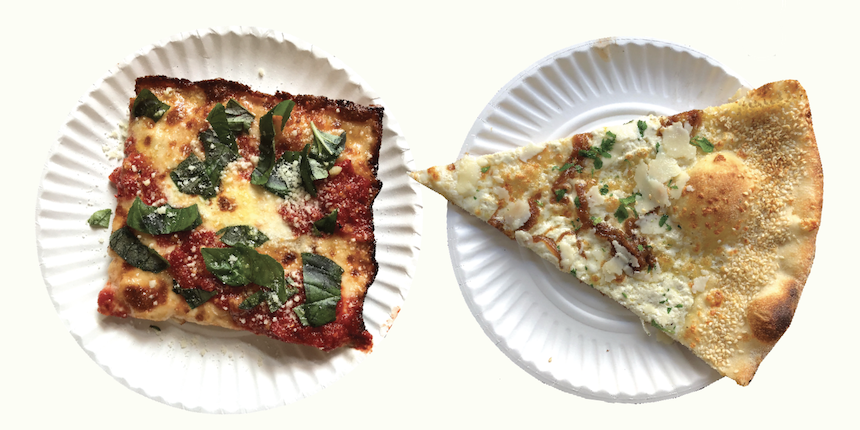Common dough problem, pizza dough snapback, has plethora of causes
Q: We have a continual problem with dough snap-back after placing it on the screen for baking. Is there anything that we can add to our dough to eliminate this problem?
A: Dough snap-back, or dough memory, can be addressed in a number of different ways (which I’ll discuss individually).
- Flour. By changing to a lower-protein content flour, we can generally reduce the amount of snap-back (though, in severe cases, this will not totally eliminate it).
- Dough fermentation. One cause of snap-back is insufficient dough conditioning through fermentation, so anything which will increase the amount of fermentation the dough receives prior to opening into a skin will help to reduce or eliminate the problem. This might include any of the following: increasing the yeast level; increasing the finished (mixed) dough temperature or increasing the total fermentation time. Any of these actions will result in an increase in dough fermentation that will weaken the wheat flour proteins and result in a softer, more extensible (less elastic) dough that exhibits less of a tendency to snap-back.
- Dough absorption. In some cases where only a slight amount of snap-back needs to be addressed, a slight increase of two to five percent in dough absorption might be sufficient to
address the problem without any other changes being necessary. - Reducing agents. Reducing agents are ingredients that act on the flour proteins by breaking them down or weakening them. Some will even destroy/denature the proteins entirely. Reducing agents are what one might call the “silver bullet” or “magic ingredient” when it comes to excessive dough snap-back or memory. These are ingredients that you just add to the dough formulation and — poof! — no more snap back.
A few words about these ingredients are in order though. Some are capable of completely liquefying a dough if used incorrectly or at too high of a level, so use with caution. These ingredients are all added to the dough at the time of mixing. For the most part they continue to work even throughout the cold fermentation period (though to a lesser degree), so make sure the amount used is compatible with your specific dough management procedure and shop conditions. While all of the commonly used reducing agents are “natural” in nature, some may have a scary sounding name. Here are the reducing agents most commonly encountered today:
- L-cysteine/L-cysteine hydrochloride. While the name might scare you, L-cysteine is nothing more than a protein-building block and completely safe to use. Due to its potency, L-cysteine is commonly blended with an inert ingredient (such as dairy whey) as a diluent to make scaling easier and more accurate. In one form or another, these ingredients have been around for at least 50 years. And they are still widely used today to make the dough softer, more extensible and reduce or eliminate dough memory.
- Protease enzymes. Protease enzymes are also highly effective reducing agents, but they do have one major drawback in that they work by hydrolyzing/destroying the proteins. To boot, they are fully capable of liquefying a dough, rendering it totally unusable. Like L-cysteine, they continue to work over the life of the dough. But unlike L-cysteine, protease enzymes are somewhat temperature sensitive. So if at any time the dough should warm-up, especially to temperatures in the high 80s or more, the rate of reducing action can be increased dramatically. For this reason, protease enzyme-based reducing agents are seldom used in pizza doughs.
- Dead yeast. Dead yeast is basically glutathione, another amino acid, but this one is found in yeast cells (all of the yeast that we use contains glutathione). The glutathione is locked up inside of the cell so it never poses a problem or acts as a reducing agent under normal conditions, but when the yeast cell is compromised the glutathione is released and it acts as a reducing agent. This is the reason why frozen dough always has a softer, more extensible feel to it. The ice crystals formed during the freezing process rupture some of the yeast cells, allowing the glutathione to leach out of the cell and act as a reducing agent. Dead yeast is a very effective dough-reducing agent. And because it is derived from yeast, and since all yeast contains glutathione, if you need to label your pizzas the dead yeast reducing agent can be shown right along with the live yeast that you are also adding to your dough. In essence, it doesn’t show up as another ingredient on a package label/ingredient declaration. It is also completely natural if that is important to you. I like to say that glutathione is a “first cousin” to L-cysteine since they are both amino acids and they work in almost an identical manner when it comes to reducing snap-back/memory in the dough. So the same precautions must be followed when using dead yeast as one would use when using an L-cysteine based reducing agent.
- Onion and garlic. Both onion and garlic exert a reducing effect upon the dough, making it softer and more extensible with reduced dough snap-back. As little as .25 percent, either individually or in combination of onion and/or garlic powder, will effectively reduce dough snap-back. But it brings baggage in the form of flavor and aroma that may or may not be desirable. If it is not desirable to have the characteristic flavor, a deodorized form of these ingredients (referred to as deodorized vegetable powder) is available from many wholesale bakery ingredient suppliers. This works equally as well but without the onion/garlic flavor. A unique aspect of using onion/garlic as a reducing agent is that it is all but impossible to really overdose a dough when using it. This is because of the way it interacts with the proteins, so there is only a limited amount of dough softening/relaxing achieved with its use. While the amount of relaxing is limited, it is usually sufficient to give the desired result in reducing dough snap-back/memory when opening the dough into pizza skins.
Excessive dough memory is pretty easy to address either through formulation, dough management or additive ingredients. Some of our readers may be forming their pizza skins by use of a hot or cold pizza press. If you are in this group, this article should be of special interest to you as dough snap-back/memory can be a bit problematic when using this forming method. Whatever your forming method, use just enough of the selected reducing agent to address the snap-back/memory problem. This is a case where more is not better as it can get you into trouble as fast as it can get you out if not used wisely.
The late Tom Lehmann was a former director at the American Institute of Baking in Manhattan, Kansas and Pizza Today’s longstanding resident dough expert.
>> Explore answers to more common pizza dough questions in Troubleshooting your Pizza Dough: What’s wrong with my pizza dough? <<








